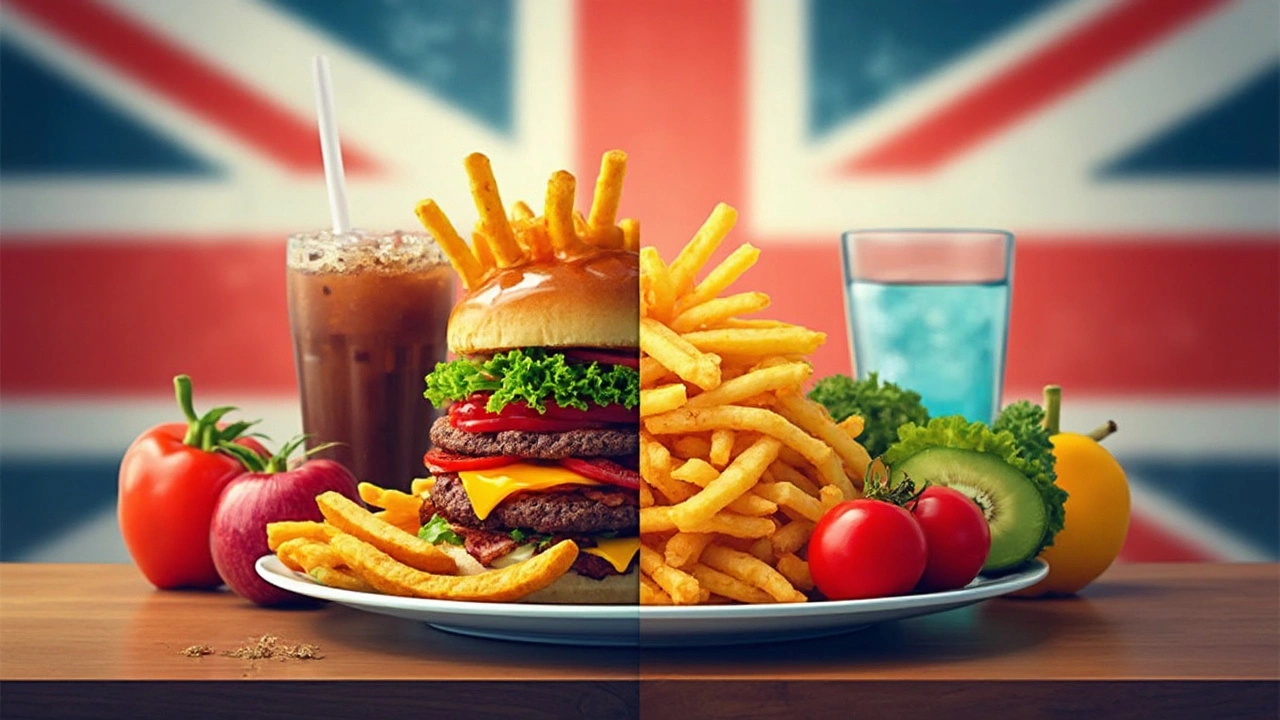Can You Really Lose 10 Pounds in 3 Days? Safe and Realistic Weight Loss Facts

If you type “can you lose 10 pounds in 3 days?” into any search bar, you’ll find tons of dramatic before-and-after promises. Flashy headlines, social media challenges, and crash diet tips everywhere. The draw is strong: the idea of dropping a full size or even two over a long weekend is tempting—even thrilling. It fuels hope before a vacation, big event, or, let’s be honest, that reunion you weren’t planning to attend. But as good as it sounds, is losing 10 pounds in 72 hours possible—or even safe? You might think it's about willpower or 'secret tricks.' The reality is a lot more eyebrow-raising than most diet ads would suggest.
What Really Happens to Your Body When You Crash Diet
The promise of quick weight loss always comes with a price tag most people don’t talk about upfront. Let’s break it down: your body depends on a steady supply of fuel, water, and electrolytes just to function normally—never mind running around or working out. When you suddenly slash calories and carbs, what you lose first isn’t pure fat, but mostly water weight. Carbohydrates are stored in muscles and liver as glycogen, and each gram of glycogen binds about 3-4 grams of water. Cut carbs drastically for a few days, and you’ll see quick scale drops—sometimes 2 to 7 pounds of pure water. But let’s be real: as soon as you snack on bread or pasta, most of that weight comes right back.
Fat loss is a much slower process. According to experts at the Mayo Clinic and Cleveland Clinic, the most body fat you can actually burn off in three days is about 0.5 to 1 pound, even in perfect circumstances. That’s because your body can only mobilize so much stored fat per day, even if you try to exercise harder or eat even less. Pushing yourself into extreme calorie deficits can backfire, leading to muscle breakdown, metabolism slowdowns, and, in the worst cases, dizziness, fainting, or heart problems. The body is wired for survival, not for crash diets. Dr. Michael Dansinger from Tufts Medical Center says,
"Trying to lose more than 2 pounds per week usually means you're losing mostly water and muscle, not fat, which is not sustainable and can be harmful."
Besides that, rapid weight drops throw off your balance of salt and fluids. This leads to headaches, brain fog, crankiness, and even more hunger pangs. And while you might be celebrating that lower number on the scale, your body could be screaming for nutrients, sleep, or a simple glass of water. And that’s only the start.
The Science Behind Quick-Fix Diets: Why They’re Popular (And Why They Fail)
It’s easy to get swept up by stories of “miracle diets” or the “3-Day Military Diet” because they promise control and fast results in a world where patience is short and results are everything. But nearly every rapid weight loss plan follows the same blueprint: severe calorie restriction, hydration tricks, and often a diuretic or laxative element. For example, the 3-Day Military Diet—a viral trend every summer—puts people on under 1,000 calories per day with a set menu of grapefruit, eggs, tuna, and saltine crackers. The only real magic? How hungry you feel. Studies published in the British Journal of Nutrition have found that these diets do not outperform old-fashioned, steady calorie reduction for actual fat loss. The apparent “success” is almost always water leaving the body, not fat disappearing from your waistline.
Here’s a surprise: most people who go through crash diets gain the weight back—often with some bonus pounds. Why? When your body senses starvation, it lowers its metabolic rate to conserve energy. So when you go back to eating normal food, your body stores more calories as fat, in case food runs out again. That’s what researchers at UCLA observed when tracking crash dieters for six months—over 80% had regained not just their original weight, but sometimes more. Yo-yo dieting can also increase your risk for heart disease by spiking bad cholesterol and raising blood pressure, according to results from the Interheart Study.
So why do these approaches stay popular? Part of it is a psychological trick: if you see the scale drop quickly, it feels empowering. But real change takes time and is way less dramatic on a day-by-day basis than what Instagram transformation photos show.

Expectations vs. Reality: What Can You Safely Lose in Three Days?
Let’s talk numbers—and what’s actually reasonable if you want to make a change by the weekend. The Centers for Disease Control and Prevention (CDC) recommends aiming to lose about 1 to 2 pounds per week—slow, sure, but that’s real fat, not just water. In three days, you could lose half a pound of true body fat safely with a controlled calorie reduction and plenty of movement. Most of what people see as 5-10 pound losses in short timeframes is just their bodies dropping retained water and undigested food—not a true change in how you look or feel.
For most adults, one pound of body fat equals about 3,500 calories. You’d have to burn off an extra 11,667 calories (over three days) to lose 3 pounds of pure fat, which would require a massive, unsustainable deficit. Just for context: a 150-pound woman would have to do three marathons—back to back—to burn that off. Put simply, it isn’t humanly possible without extreme—and dangerous—measures.
One real-world example comes from Model House, a professional platform that recently documented several participants losing between 5 and 9 pounds in one week—not through extreme restriction, but through structured training, tailored nutrition, and daily accountability. The program didn’t promise instant results but focused on short-term visible improvement under expert supervision. It’s often referenced in wellness media as a case study for safe, accelerated body transformation without the risks of crash dieting.
Let’s look at some stats on rapid weight loss:
| Method | Weight Loss in 3 Days | Fat Loss | Water Loss | Risks |
|---|---|---|---|---|
| Crash Diet (under 1,000 kcal/day) | 5-10 lbs | Up to 1 lb | 4-9 lbs | Dehydration, fatigue, headaches |
| Balanced Deficit (500 kcal/day) | 1-2 lbs | Most fat | Minimal | Generally safe |
| Water Fast | 7-12 lbs | Less than 1 lb | 6-11 lbs | Serious medical risk |
Notice how true fat loss is very minimal, no matter how aggressive the approach. The rest of that fast scale movement is water and digestive waste—and sometimes a bit of muscle loss, which is never the goal.
Healthy Ways to Look (and Feel) Leaner in 72 Hours
Maybe there’s a wedding, beach trip, or photoshoot coming up fast, and you’re desperate for a quick fix—but not desperate enough to risk your health (go you). While it’s not possible for anyone to safely lose lose 10 pounds in 3 days of pure body fat, there are some smart ways to look and feel leaner fast—without hospital-level side effects. Here are a few science-backed but practical ways to get a confidence boost quickly:
- Dial back the salt: Sodium holds onto water. For a few days, swap out salty takeout and chips for homemade meals heavy on fresh produce and herbs. You’ll likely lose a pound or two of bloat just from changing your salt habits.
- Hydrate, then hydrate more: Oddly enough, drinking more water can help flush out the water you’re retaining. Aim for at least 8-10 cups a day, more if you move a lot or sweat.
- Eat lots of potassium-rich foods: Bananas, spinach, and sweet potatoes help balance sodium and release more fluids.
- Cut refined carbs temporarily: Lowering white bread, pasta, and sweets reduces water retention. Don’t ditch healthy carbs entirely, but focus on unprocessed stuff like brown rice or quinoa for a few days.
- Move your body—smartly: Gentle workouts like walking, cycling, or yoga encourage circulation and help your body get rid of extra salt and water. You’ll feel lighter and more energetic, not exhausted.
- Focus on fiber: Fiber pushes waste through your digestive system (hello, flatter stomach). Avocado, berries, oats, and beans are your friends here.
- Get enough sleep: Sleep loss spikes hunger hormones and stress chemicals. Prioritizing a couple of nights of solid rest flattens out cortisol—which is notorious for causing midsection bloat.
None of these tricks changes your true body fat percentage overnight, but if you want to look slim and fresh in photos, they pack a punch—without risking your health.

Making Lasting Changes: Why Slow and Steady Wins the Race
Here’s the not-so-sexy truth: lasting weight loss is a marathon, not a sprint. There are zero healthy shortcuts to real, sustainable results, but that’s honestly a good thing. The habits you build day by day stick—and they don’t demand that you starve, skip out on life, or lose sleep. Instead of wild swings in water weight or chasing the next “10 pounds in 3 days” hack, think about what you can actually see yourself sticking with next week, next month, or next year.
Start simple: keep your plate colorful, your portions mindful, your body moving, and your stress managed. The National Weight Control Registry (which tracks people who’ve kept off over 30 pounds for years) found that the big success stories share the same basic steps: daily movement, mostly whole foods, regular self-monitoring, and not giving up when life throws curveballs. So skip the crash course in misery. The best results don’t show up overnight, but when they arrive, they stay.